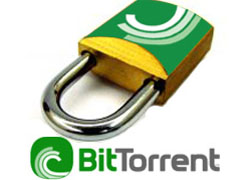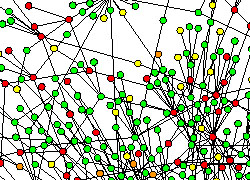IMDEA Networks

Archives: Events
Unrevealing the structure of live BitTorrent Swarms: methodology and analysis
BitTorrent is one of the most popular application in the current Internet. However, we still have little knowledge about the topology of real BitTorrent swarms and how the traffic is actually exchanged among peers. This paper addresses fundamental questions regarding the topology of live BitTorrent swarms. For this purpose we have collected the evolution of the graph topology of 250 real torrents from its birth during a period of 15 days. Using this dataset we first demonstrate that real BitTorrent swarms are neither random graphs nor small world networks.
Read more arrow_right_altInsomnia in the Access or How to Curb Access Network Related Energy Consumption
Access networks include modems, home gateways, and DSL Access Multiplexers (DSLAMs), and are responsible for 70-80% of total network-based energyconsumption. In this paper I'll take an in-depth look at the problem of greeningaccess networks, identify three root problems, and propose practical solutionsfor their user- and ISP-parts. On the user side, the combination of continuous light traffic and lack of alternative paths condemnsgateways to being powered most of the time despite having Sleep-on-Idle (SoI) capabilities.
Read more arrow_right_altFakeDetector: A measurement-based tool to get rid out of fake content in your BitTorrent Downloads
Fake content represents an important portion of those files shared in BitTorrent. In this paper we conduct a large scale measurement study in order to analyse the fake content publishing phenomenon in the BitTorrent Ecosystem. Our results reveal that a few tens of users are responsible for 90% of the fake content. Furthermore, more than 99% of the analysed fake files are linked to either malware or scam websites. This creates a serious thread for the BitTorrent ecosystem.
Read more arrow_right_altBounds on QoS-Constrained Energy Savings in Cellular Access Networks with Sleep Modes
Sleep modes are emerging as a promising technique for energy-efficient networking: by adequately putting to sleep and waking up network resources according to traffic demands, a proportionality between energy consumption and network utilization can be approached, with important reductions in energy consumption. Previous studies have investigated and evaluated sleep modes for wireless access networks, computing variable percentages of energy savings.
Read more arrow_right_altWhere are my followers? Understanding the Locality Effect in Twitter
Twitter is one of the most used applications in the current Internet with more than 200M accounts created so far. As other large-scale systems Twitter can obtain benefit by exploiting the Locality effect existing among its users. In this paper we perform the first comprehensive study of the Locality effect of Twitter. For this purpose we have collected the geographical location of around 1M Twitter users and 16M of their followers. Our results demonstrate that language and cultural characteristics determine the level of Locality expected for different countries.
Read more arrow_right_altBrief Announcement: B-Neck - A Distributed and Quiescent Max-min Fair Algorithm
In this brief announcement we propose B-Neck, a max-min fair distributed algorithm that is also quiescent. As far as we know, B-Neck is the first max-min fair distributed algorithm that does not require a continuous injection of control traffic to compute the rates. When changes occur, affected sessions are asynchronously informed, so they can start the process of computing their new rate (i.e., sessions do not need to poll the network for changes). The correctness of B-Neck is formally proved, and extensive simulations are conducted. In them it is shown that B-Neck converges relatively fast and behaves nicely in presence of sessions arriving and de- parting.
Read more arrow_right_altTrade-offs in Implementing Atomic Multi-Writer, Multi-Reader Registers in Asynchronous Message-passing Systems
The technological advancement and information overload in recent years increased the popularity of Distributed Storage Systems where the data is replicated and maintained at multiple disks or servers residing at different network locations. While replication is sufficient to ensure data survivability, it raises an important question: "How can we efficiently maintain consistency among the replicas, despite system asynchrony and failures?"
Read more arrow_right_alt
Wireless Ad Hoc Networks in the Internet: Flooding and Routing Optimizations
As wireless ad hoc networking becomes more and more popular and ad hoc networks are used for an increasing number of applications, the integration of these networks in today's Internet, still mostly organized as a set of interconnected fixed and wired networks, becomes a key research field in the computer networking domain.
Read more arrow_right_altBROADCAST 2011 International Trade Show for Audiovisual Technology
The Madrid Audiovisual Cluster is a member of the steering committee of BROADCAST, the professional forum for audiovisual technology, which this year is adopting a new approach: the event will experience a quantum leap from the traditional exhibition of products to the proposal of emerging solutions and contents. In this manner, BROADCAST aims to adapt to the specificities of the audiovisual technology industry today.
Read more arrow_right_altExplicitly Accommodating Origin Preference for Inter-Domain Traffic Engineering
Inter-domain traffic engineering is an important aspect of network operation both technically and economically. Traffic engineering the outbound direction is less problematic as routers under the control of the network operator are responsible for the way traffic leaves the network. The inbound direction is considerably harder as the way traffic enters a network is based on routing decisions in other networks.
Read more arrow_right_alt











Recent Comments